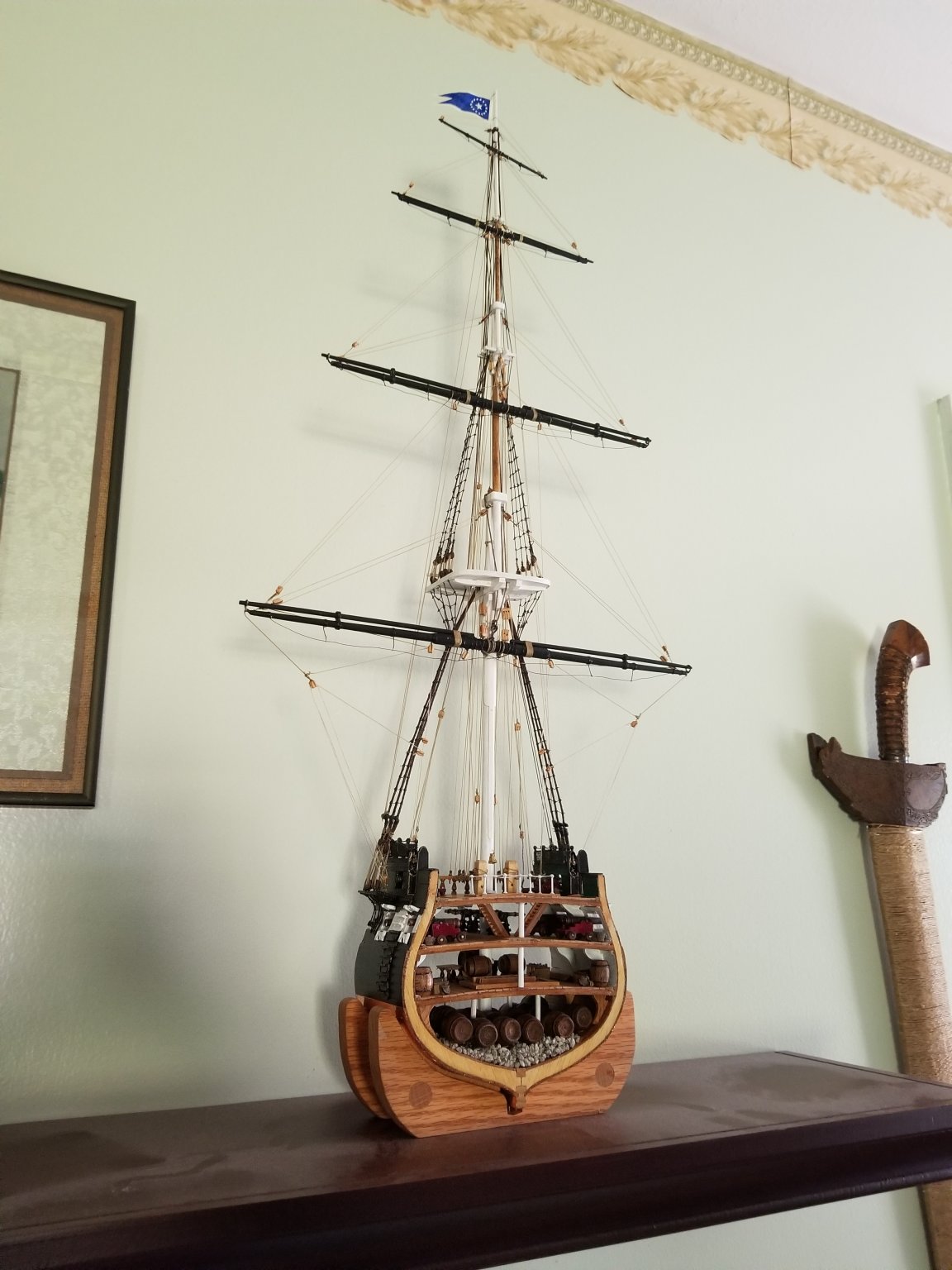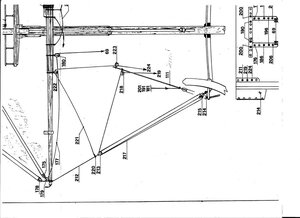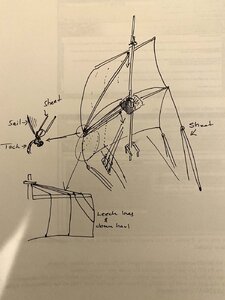- Joined
- Apr 28, 2020
- Messages
- 112
- Points
- 88

I posted this same question on my build log over at Model Ship World,but have had no response yet. Here's the link, but I'll paste my question here also;

 modelshipworld.com
modelshipworld.com
Rigging confusion!Any guidance would be appreciated!
I'm trying to get a grip on what these various lines do. Several look like some kind of lifts,such as the one through block 178. That runs to a block on the main top,one end attached to the top yard and the other running down and attached to 111 which is a main shroud. How would this be attached to the shroud? How would that line be used on the real ship,with no free end to haul on? There are similar lines,201,191 and 181 coming down from higher yards and attached to that same shroud.
What does line 221 do? Or the line coming down to pin 219 on the fife rail?
Is there an online reference explaining what various running rigging lines in general do? Thanks.

USS Constitution by Brewerpaul - FINISHED - Mamoli - scale 1:93 - Cross-section - First wooden ship model
Many years ago (25-30?), before the advent of the internet, I bought and started construction of this cross section of the USS Constitution. It may have been following a visit to that venerable ship in Boston that I felt so inspired. I got the frame built,deck beams formed and installed, and the ...
 modelshipworld.com
modelshipworld.com
Rigging confusion!Any guidance would be appreciated!
I'm trying to get a grip on what these various lines do. Several look like some kind of lifts,such as the one through block 178. That runs to a block on the main top,one end attached to the top yard and the other running down and attached to 111 which is a main shroud. How would this be attached to the shroud? How would that line be used on the real ship,with no free end to haul on? There are similar lines,201,191 and 181 coming down from higher yards and attached to that same shroud.
What does line 221 do? Or the line coming down to pin 219 on the fife rail?
Is there an online reference explaining what various running rigging lines in general do? Thanks.





